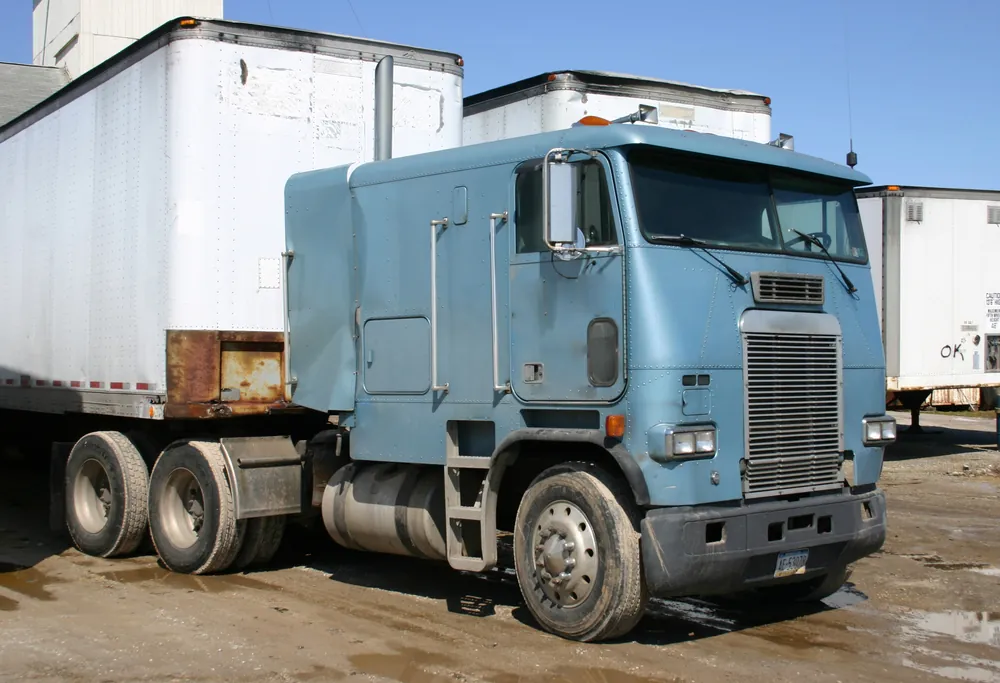When you call FreightCenter, you’re not just reaching out to a logistics company; you’re connecting with seasoned professionals who have been navigating the world of semi-trucks for over 25 years. Our team’s extensive experience with these powerful vehicles ensures that by the end of your call, you’ll clearly understand what a semi-truck is and how it plays a crucial role in shipping. From full truckload to LTL (less-than-truckload) services, we’ve been utilizing these robust trucks to deliver efficiency and reliability in every shipment. Let us guide you through the complexities of semi-trucks and how they can serve your shipping needs effectively.

Why is it Called a Semi Truck?, and Where Did The Name Come From?
The “semi” in “semi-truck” is derived from the vehicle’s most distinguishing feature: the semi-trailer. Unlike a full trailer, which has wheels at both ends and is fully self-suited, a semi-trailer is only partially supported by its wheels. The front of the trailer rests on the rear of the tractor unit (the truck), which bears the weight and provides the necessary stability during transit. This design allows for easier maneuverability and enables the transport of heavier and larger loads, making the semi-truck a versatile and efficient vehicle in the trucking industry.
By exploring the origins of this term, we can gain a deeper understanding of how language and design intersect in the evolution of transportation technology. The semi truck’s name, reflecting its innovative structure, has remained relevant for over a century, signifying its continued importance in moving goods across vast distances.
The Evolution of Semi Trucks
The evolution of the semi-truck traces back to the early 20th century, when freight transportation was limited to horse-drawn wagons or smaller trucks. As industries expanded and the demand for transporting larger volumes of goods over greater distances grew, the shortcomings of these older methods became increasingly evident. The need for a more efficient and scalable solution led to the innovation that would eventually shape modern logistics.
In the 1910s, August Fruehauf, a blacksmith based in Detroit, played a pivotal role in this evolution by inventing the first semi-trailer. His original design was intended to haul a boat behind a Ford Model T. This concept of a semi-trailer being towed by a tractor unit quickly gained popularity, providing a far more effective way to transport heavy loads. The semi-trailer’semi-trailer’setach from the tractor unit allowed more flexibility in loading and unloading cargo, revolutionizing freight transport.
Fruehauf, the foundation for the modern semi-truck, transformed the way goods were moved across the country and setting the stage for the trucking industry’s exindustry’sowth in the following decades today; the basic principles of his design remain integral to the structure and function of semi-trucks, underscoring their continued importance in global trade and commerce.


Why the Name Stuck
The term “semi-truck” has endured, even as the vehicles evolved. Its lasting use is mainly due to its clarity and precision in describing the vehicle’s design and function. In the transportation industry, where accurate terminology is crucial, “semi truck” succinctly conveys the combination of a tractor unit and a semi-trailer, central to the vehicle’s identity.
Additionally, the term is specific enough to distinguish semi trucks from other types of trucks, such as dump trucks, flatbeds, or straight trucks. The unique design of the semi-truck—combining a powerful tractor with a semi-trailer partially supported by the tractor—has proven to be incredibly versatile and adaptable. This combination allows for enhanced maneuverability and the ability to handle various types of freight, making the semi-truck a reliable workhorse in logistics.
The name “semi truck” has become synonymous with long-haul freight transport, reflecting the vehicle’s practical capabilities and enduring significance in the industry.
Global Variations
While “semi truck” is commonly used in the United States and Canada, other parts of the world use different terminology. For example:
– In the United Kingdom and Ireland, they are often called “articulated lorries” or “artics” for short.
– They are known as “semi-trailers,” “semis,” and “road trains” in Australia and New Zealand.
– In continental Europe, they are typically called “tractor-trailers” or “articulated trucks”..” despite the different names, the basic design and function remain the same globally.


The term “semi truck” is deeply rooted in the vehicle’s history and design. It reflects the innovative combination of a tractor unit with a semi-trailer, a highly effective design for transporting goods across long distances. Understanding the origins of this term gives us insight into the evolution of transportation and highlights the importance of terminology in the logistics industry. Whether you’re a trucker, a logistics professional, or just someone curious about the origins of everyday terms, knowing why it’s called a semi truck adds another layer of appreciation for these essential vehicles.

